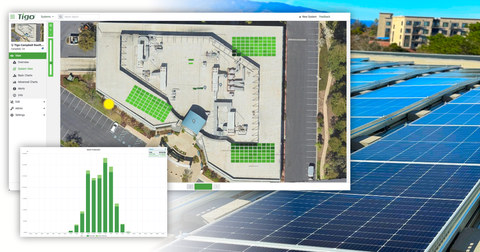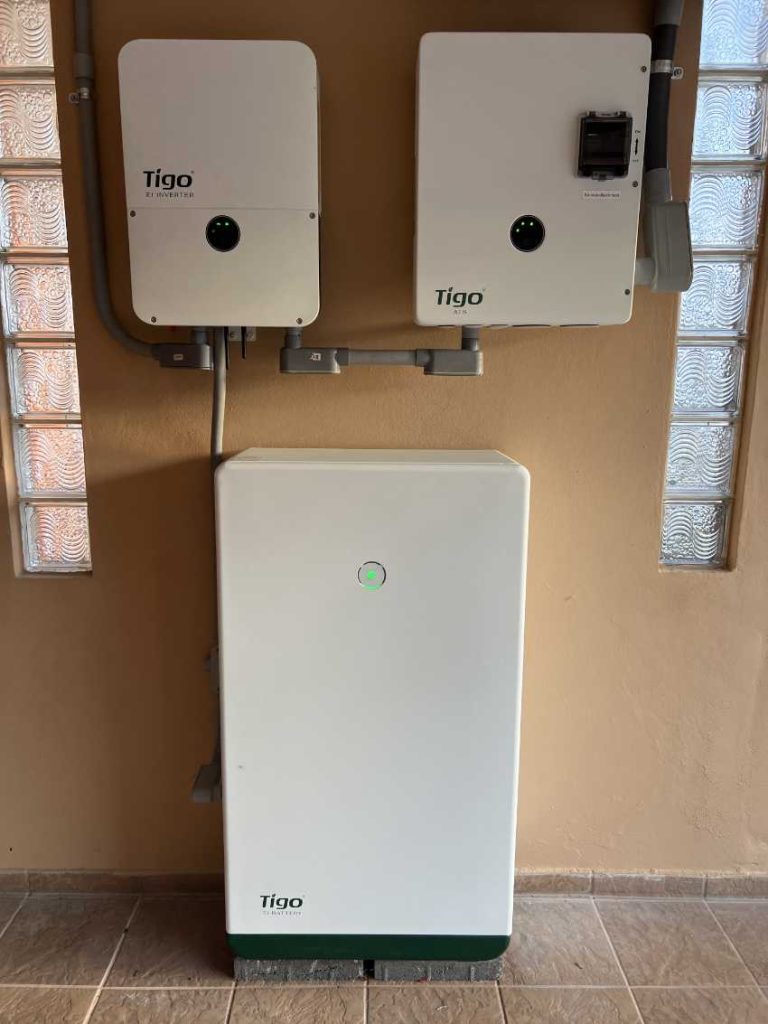Tigo Energy is a leading provider of software and hardware solutions aimed at enhancing safety, increasing energy yield, and reducing operating costs in solar systems across residential, commercial, and utility-scale projects across the globe.
The company was founded in 2007 to improve the quality, safety, and performance of photovoltaic (PV) solar energy generating systems. In 2023, they went public on the New York Stock Exchange under NASDAQ as TYGO.
Easy Engineering: What are the main areas of activity of the company?
Tigo combines its Flex MLPE (Module Level Power Electronics) and solar optimizer technology with intelligent, cloud-based software capabilities for advanced energy monitoring and control.
Tigo MLPE products maximize performance, enable real-time energy monitoring, and provide code-required rapid shutdown at the module level. The Company also develops and manufactures inverters and battery storage systems for the residential solar-plus-storage market, and more.
As it relates to inverters, the company works to deliver flexible and efficient devices for residential solar+ storage systems. The centerpiece of the recent ESS solution is the storage-ready Tigo GO inverter, and the complete solution includes module-level optimizers to increase output and design flexibility, modular and compact batteries, and an automatic transfer switch with generator input to enable whole or select load backup.
Ultimately, Tigo Energy leans on the idea that exceptional hardware is hamstrung without robust software. Given the overwhelming volume of data modern solar and solar-plus-storage systems (can) generate, solar installers and system owners cannot efficiently parse and use that data, particularly as solar fleets grow. The key lies in embracing advanced data models and analytics, which is only possible with increasingly sophisticated and capable software.

E.E: What’s the news about new products/services?
The company recently announced the newest Tigo Flex MLPE product family addition, the Tigo TS4-X line. Designed to serve the commercial and industrial (C&I) and utility solar markets, Tigo TS4-X products support the latest high-power solar modules, up to 800W. They feature compatibility with Pure Signal™ technology in Tigo RSS Transmitters and pair with an industry-leading list of third-party solar inverters to deliver design and installation flexibility for solar installers and engineering, procurement, and construction specialists (EPCs).
E.E: What are the ranges of products/services?
The company’s products and services cover the entire solar sector—from residential to commercial and industrial to utility-scale projects.
The company manufactures a series of optimizers, inverters, batteries and more hardware. Specifically, Tigo has more than 150 patents issued or pending to reinforce the strength of Tigo Intellectual Property (IP) portfolio and represents the endurance of return on investment in innovation. This includes APsmart products, QC solar products, and GoodWe Products, including devices with Rapid Shutdown capabilities.
Tigo Energy employs impedance matching to deliver power control, data monitoring, and safety features to each module within a solar array, enhancing performance and safety compared to conventional system-level technologies. Additionally, the company offers customer data hosting and furnishes comprehensive analytics through a software-as-a-service business model.
Pioneering the integration of its electronics directly into the junction box of solar modules, Tigo Energy became the first power optimizer to achieve successful certification in this innovation. This breakthrough reduces component and labor costs associated with optimized photovoltaic arrays while eliminating unnecessary extra hardware.

E.E: What is the state of the market where you are currently active?
The rapid shutdown market is experiencing significant growth in the solar industry, particularly in regions where Tigo Energy operates, such as North America, Europe, and parts of Asia and South America (i.e., Brazilian states including Minas Gerais, Mato Grosso and Goias).
Rapid shutdown, initially introduced as an electrical safety requirement by the National Electrical Code (NEC) in the United States, has become a global standard for enhancing safety measures in solar PV systems.
This requirement mandates the installation of mechanisms to de-energize or reduce the voltage of solar modules during emergencies, ensuring the safety of firefighters, installers, and other personnel. With its innovative TS4 platform, Tigo Energy is uniquely positioned to address the rapid shutdown market landscape.
While rapid shutdown is mandatory in countries like the US, Canada, Czech Republic, Slovenia, Thailand, and the Philippines, its adoption is encouraged in other regions of Europe, Asia, and parts of Latin America.
This trend is driven by various factors, including the prioritization of firefighter safety, reduced insurance costs, and the influence of transnational companies aligning with safety standards from their home countries.
Overall, the rapid shutdown market reflects a global commitment to enhancing safety standards in solar installations. Tigo Energy remains at the forefront, providing advanced solutions to meet these evolving needs.

E.E: What can you tell us about market trends?
In short, the two most important solar trends are software and service. The industry is in a phase of rapid growth and evolution, and as it evolves, hardware will become less important. The importance and potential of software cannot be understated. While the development of more efficient power electronics and improvements in solar panel output have been important thus far, the real game-changer in the industry is the software that makes all of the components become much smarter and more collaborative. From sophisticated energy management systems, intelligent optimization algorithms, and seamless integration with grid infrastructure, a software-centric approach will enable greater flexibility, control, and efficiency in harnessing solar energy.
Tied for first place is service. The solar industry will evolve to focus on continuous improvement across every facet of the value chain, and a service-oriented culture enables this. While quality assurance and reliability testing have historically been confined to hardware manufacturing operations, the commitment to excellence, backed by formal processes and a service mindset by all stakeholders involved in the solar value chain, will unlock the industry’s prosperity and continued growth.
E.E: What are the most innovative products/services marketed?
As eluded in the last answer, we at Tigo asked ourselves, “How can we ensure top-tier quality and longevity in solar installations when we’re distanced from the planning and installation processes?”
Our solution: The Green Glove Service Program, a training service for first-time installers of Tigo residential solar and storage products and is also available for both new and existing commercial installations with any MLPE equipment.
Going beyond mere paperwork and online resources, the solar value chain often operates in silos. We supply hardware, and others handle planning and installation, but with Green Glove, we unify the process.
Through comprehensive training, design reviews, and hands-on installation support, we bridge the gap and foster exceptional solar outcomes. This pioneering program addresses industry-wide challenges, streamlining processes and enhancing collaboration. By empowering stakeholders with the tools and knowledge needed for success, we’re driving continuous improvement in solar energy. Our installer partners enthusiastically embrace this initiative, joining us in our mission to elevate industry standards and outcomes.

E.E: What estimations do you have for 2024?
In 2024, the foremost challenge in large-scale solar projects is, coincidentally, the same as the one in residential projects: quality. Not, however, as a hollow platitude, but as a relentless and programmatic pursuit of quality throughout the entire solar value chain. Great design, high-quality equipment, and careful installation are all important ingredients, but collaboration between the many entities that make up the solar value chain is the key that picks the quality lock. The EPCs at the center of large-scale solar deployments have to adopt a culture of open communication. Still, they must also carefully select equipment vendors and labor and construction providers to help them deliver a high-quality finished product.
For example, mitigating ‘crosstalk’ is important to ensuring large-scale solar production sites’ efficient and safe operation. This electromagnetic interference occurs naturally when two or more electrical circuits run next to each other. Ensuring that crosstalk does not become an issue requires good system design, qualified installation teams, an understanding of product guidelines, and using quality components. On-the-spot value engineering decisions made by anyone outside of the information loop, for crosstalk or any number of other details, can undermine a positive outcome. For optimal system performance, optimal design, installation, and component performance are prerequisites, as are a culture of continuous improvement, transparent root cause analyses, and a dedication to safeguarding the reputation of solar.
